Jacobs School of Medicine and Biomedical Sciences Tours
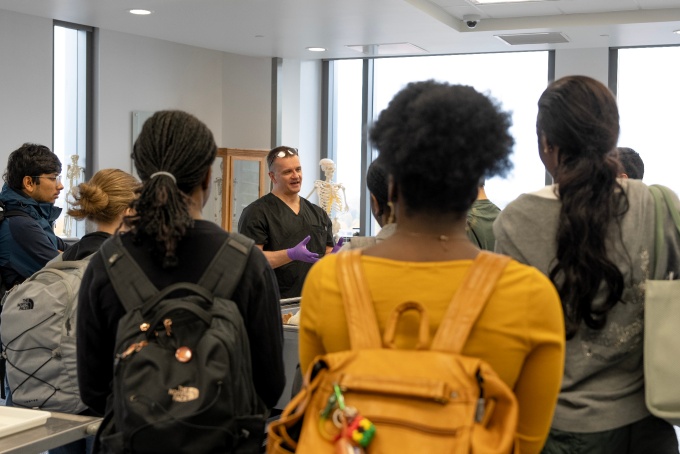
Jacobs School of Medicine and Biomedical Sciences offers two types of tours:
The Jacobs School of Medicine and Biomedical Sciences High School Program is designed for high school students with an interest in STEM related fields including medicine and research. This immersive experience provides high school groups with an in-depth tour of our facilities and presentations and/or workshops from faculty or staff in various departments. Reservations are required by submitting your request below.
Group tours of the Jacobs School of Medicine and Biomedical Sciences are also offered for college-level pre-medical clubs and organizations. Reservations are required by submitting your request below.
Individual, after business hours and/or weekend tours are not available.
Programs
We have two experiences available for our high school groups: all-in and abridged.
All In!
2-3 hours
Spend time in Gross Anatomy, the Behling Simulation Center, Clinical Competency Center, research labs and the Brain Museum. The day ends with a Q&A with an admissions officer and medical students, as well as a suturing clinic if time allows.
Thank you for your interest in our high school tours. Fall dates are full. Spring dates will be added in December!
Abridged but Amazing!
1 hour and 30 minutes
Spend time in our Gross Anatomy lab and the Brain Museum. If time permits, the day ends with a brief Q&A with an admissions officer and medical students if time allows.
Request a Tour
Learning Facilities
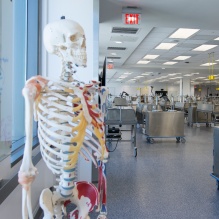
Gross Anatomy Lab
- supports anatomy instruction with 32 dissection tables and onsite specimen storage
- features numerous large computer screens linked to a live feed
- computer terminals contain instructional software and offer internet access so students can use online gross anatomy resources
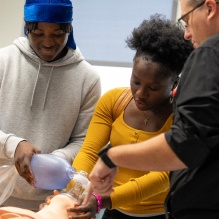
Behling Simulation Center
- a 12,000-square-foot center that offers eight flexible clinical rooms, which can be transformed to meet the needs of nearly any environment
- more than 50 different simulation scenarios in which students address cases including traumatic injury, pediatric septic shock, kidney disease and teen pregnancy
- fosters highly collaborative, interprofessional health sciences education
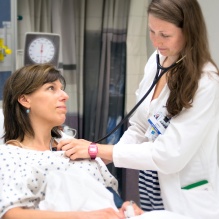
Margaret Wendt Clinical Competency Center
- in the center’s 18 exam rooms, students practice taking patient histories, performing physical exams, communicating disease management and treatment options, and discussing the diagnosis of terminal illnesses
- to build their interpersonal and examination skills, students work with standardized patients — individuals trained to simulate real patients with specific conditions
- faculty write case scenarios to develop and test students’ professional skills
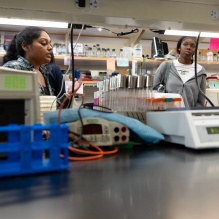
Biomedical Research Labs
- supports cutting-edge research to understand the mechanisms that lead to human health and how they go wrong in human disease
- works to understand cancer, neurodegenerative disease, addiction, pain, autoimmunity and infectious diseases
- trains the next generation of scientists, with trainees at all levels working with faculty
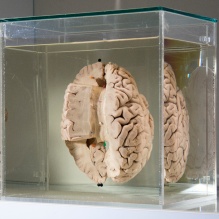
Brain Museum
- The downtown Brain Museum has about 40 human brain specimens, as well as various anatomical models of brains, skulls and other items
- The collection demonstrates how the components of our nervous systems work together
- Visitors can see the brain’s layers and internal structures firsthand and view them from different angles
Tour Wrap-Up
Q&A With Medical Students and Admissions Office
Visit with an admissions officer to learn more about how to apply to medical school and how to prepare. Current medical students will be present to ask questions about life as a medical student.
Suturing Clinic
If time allows, high school students will engage in a suturing lesson, one of several hands-on activities designed to teach basic clinical skills.
Please fill out the form below and we will be in touch as soon as possible.
We look forward to seeing you on campus!